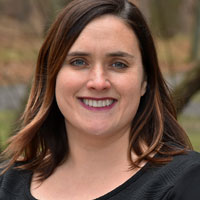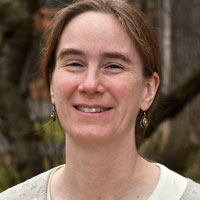While men still receive a higher proportion of doctoral degrees across all scientific and engineering fields (53.8%, versus 46.2% for women ), this gap has narrowed since the mid-1980s. (There was a 31.4% gap in 1985.)
In some fields, such as the biological, agricultural and environmental life sciences—the number of doctoral degrees earned by women now exceeds those earned by men—6941 females versus 5578 males —and more women than men report definite employment in academia as their next step after earning their Ph.D.—3408 females versus 2315 males. In other disciplines, like chemistry and engineering, the gender gap in the number of doctoral degrees is still quite large, with chemistry 59.7% males and engineering 76.8% males .
It's obvious, however, that women are earning the required credentials and even obtaining faculty jobs.
Yet among faculty at four-year educational institutions, women are still underrepresented at every level of career advancement.
Life-science faculties are overwhelmingly male. Women have been earning more life science Ph.D.s than men for the past 12 years, but the gender disparity remains—especially among mid- and late-stage faculty, with early-stage 54.4% male, mid-stage 67.1% male and late-stage 73.7% male .
It isn't a simple problem of women needing a few more years to "catch up." Something else is at play in limiting the number of faculty women or leading women to leave academia earlier than men.
Identifying these limiting factors is a complex pursuit. Perhaps the halls of academia are hostile to women. Maybe cumulative effects of microaggressions are to blame; maybe the status quo inadequately supports academic women who also devote significant time and energy to family obligations.
In our next two articles, we'll stir the pot on the special problems women in academia face. For now, some brief thoughts on why this disparity warrants additional attention—for the benefit of career-minded women, and for the students who would likely benefit by learning from and working with a diverse pool of professionals.
The data bring up an essential question: Is this gender disparity among science faculty in higher education a problem?
If so, why?
We expect most readers here would agree that the underrepresentation of women in science and technology fields is not good. We'd like to start a discussion about the nature of that problem, with the hope that continued dialogue might promote efforts to lessen the gender gap. One obvious problem with unequal representation in any sector of the work force is that industries—and for us, our students—are missing out on learning from people with different points of view, and different ways of thinking about and addressing issues. A subset of this problem: Young women are much less likely to see their future selves represented as faculty members, making the gender disparity somewhat of a self-perpetuating problem.
We each recall instances when mentorship from thoughtful and successful women was important to our career advancement. We were also struck by the realization that, as a group, relatively few of our most significant career-related mentors have been women. Until women are more equally represented among faculty, young women scientists will continue to lack the tailored support enjoyed by their male colleagues.
And as we'll discuss in later articles, women are more likely to assume caretaking and service positions within their workplaces. With fewer women in leadership positions, this time- and energy-intensive work disproportionately falls on individual women. As such, female faculty spend more time doing things that—while vitally important to our students—don't further our own careers.
What do we as females in academia do with the weight of this disparity?
We think one important step is to keep talking about it—not with indignance, but with authority and an eye toward the future.
It seems especially important to continue the discourse with our male counterparts; helping everyone to see the full picture can only help us all move toward parity. This probably means that we have to be ready to face criticism—nothing new there!—because change is always uncomfortable for some.
We must support each other as professional women when we can, and pay special attention to the way gender roles play out—in our classrooms and in our professional interactions.
For now, it seems that we women scientists must remain vigilant and continue forging the path ahead.
Contributed by:

Dr. Rebecca Penny Humphrey is an evolutionary ecologist and assistant professor of Biology at Aquinas College. She earned her Ph.D. in 2015 from Indiana University and her B.S. in 2008 from Sweet Briar College.

Dr. Jennifer Hess is a tenured, associate professor in the Aquinas College Biology Department, which she joined in 2005 after completing a post-doctoral fellowship at Juniata College. She earned her Ph.D. in 2003 from the University of Maryland, Baltimore and her B.A. in 1998 from McDaniel College.

Dr. Elizabeth Jensen is a professor of Chemistry at Aquinas College, where she has taught since 2003. She earned her Ph.D. in 2002 from Iowa State University and her B.A. in 1996 from Luther College.
1. National Science Foundation, National Center for Science and Engineering Statistics. 2016. Doctorate Recipients from U.S. Universities: 2015. Special Report NSF 17-306. Arlington, VA. Available at www.nsf.gov/statistics/2017/nsf17306/.
2. Males: 41.5% of 5,578 recipients = 2315 males; Females: 49.1% of 6,941 recipients = 3408 females
3. National Science Foundation, National Center for Science and Engineering Statistics. 2016. Doctorate Recipients from U.S. Universities: 2015. Special Report NSF 17-306. Arlington, VA. Available at www.nsf.gov/statistics/2017/nsf17306/.
4. National Science Foundation, National Center for Science and Engineering Statistics, Survey of Doctorate Recipients. 2013. http://ncsesdata.nsf.gov/doctoratework/2013/.
5. Kaminski, D. and C. Geisler. 2012. Survival Analysis of Faculty Retention in Science and Engineering by Gender. Science. 335:864-866.




